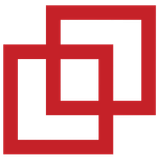Understanding Edgar Schein’s Organisational Culture Model: A Guide for CIPD Level 5 HR Professionals
In 5CO01, people professionals need to be able to explain theories and models that examine organisational and human behaviour. Here, we explore Edgar Schein.

Understanding organisational culture is essential for HR professionals pursuing the CIPD Level 5 Associate Diploma in People Management. Edgar Schein’s model of organisational culture provides a robust framework for exploring how culture shapes workplace behaviours, employee engagement, and organisational success. This article explores Schein’s three-level model, practical applications, and relevance to HR professionals aiming to enhance effective people management.
The Three Levels of Organisational Culture
Schein’s model conceptualises organisational culture as a layered construct, with each level representing a deeper aspect of cultural influence:
Artifacts:
These are the visible and tangible elements of an organisation’s culture. Examples include office design, dress codes, rituals, language, and the company logo. While these provide initial clues about an organisation’s culture, they only scratch the surface and require deeper exploration to understand their significance fully.
Espoused Values:
This level includes the organisation’s stated values, beliefs, and norms—often articulated in mission statements, policies, and leadership communications. However, there can be a gap between these espoused values and organisational behaviours. Identifying such discrepancies is crucial for HR professionals to assess cultural authenticity.
Basic Assumptions:
At the core of Schein’s model are the unconscious beliefs and assumptions that drive behaviour within an organisation. These deeply ingrained ideas—such as beliefs about human nature or authority—are often unspoken but significantly impact workplace dynamics. Uncovering these assumptions is essential for achieving meaningful cultural change.
Applying Schein’s Model in HR Practice
HR professionals can leverage Schein’s model in several ways to enhance organisational effectiveness:
1. Diagnosing Organisational Culture
Understanding all three levels of culture enables HR practitioners to gain a comprehensive view of an organisation’s identity. For example, this model can help identify potential cultural clashes and align strategies during mergers or restructuring.
2. Driving Cultural Change
Schein emphasised that cultural change requires addressing deep-seated assumptions rather than merely altering surface-level behaviours. HR professionals can facilitate this transformation by fostering open dialogue with employees to uncover hidden beliefs and align them with organisational goals.
3. Aligning Culture with Strategy
HR teams play a pivotal role in bridging this gap when there is a misalignment between espoused values and actual practices. Organisations can enhance trust, integrity, and strategic alignment by promoting behaviours that reflect stated values.
4. Enhancing Employee Engagement
A culture that supports fairness, trust, and autonomy fosters higher employee engagement and retention. HR professionals can create a more motivated workforce by designing policies that resonate with employees’ needs—rather than just leadership rhetoric.
5. Promoting Inclusion and Belonging
Schein’s model helps uncover unconscious biases embedded in fundamental assumptions that may marginalise certain groups. Organisations can move beyond superficial diversity initiatives by addressing these biases to build genuinely inclusive environments.
Relevance to CIPD Level 5 Students
Understanding organisational culture is integral to modules like “Organisational Performance and Culture in Practice” and “Professional Behaviours and Valuing People” for those studying the CIPD Level 5 Associate Diploma in People Management. Schein’s model equips learners with the analytical tools needed to assess cultural dynamics and implement strategies for improvement critically.
Conclusion
Edgar Schein’s organisational culture model offers HR professionals a structured approach to understanding the complexities of workplace culture. HR practitioners can diagnose issues, drive meaningful change, and align culture with business objectives by analysing artefacts, espoused values, and basic assumptions. For CIPD Level 5 students aspiring to senior HR roles, mastering this framework is not just an academic exercise—it’s a practical tool for shaping resilient and inclusive organisations that thrive in today’s dynamic business environment.





